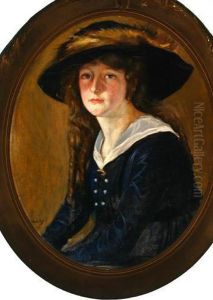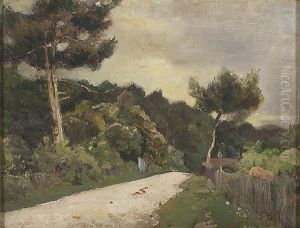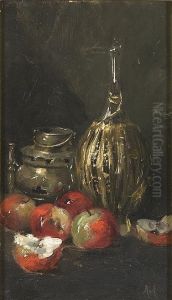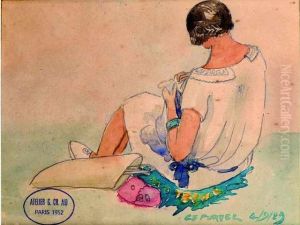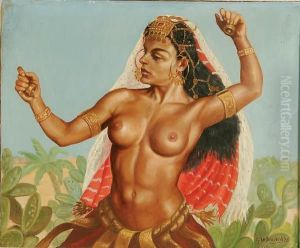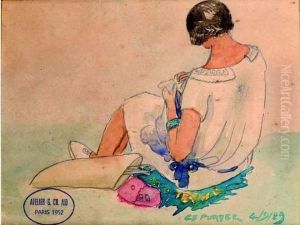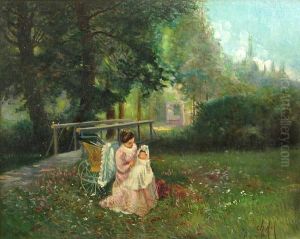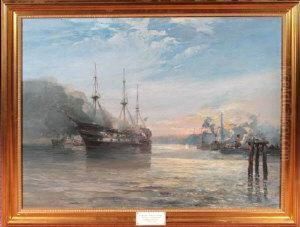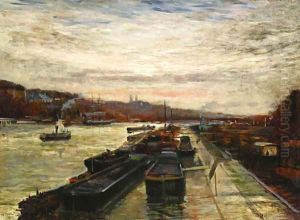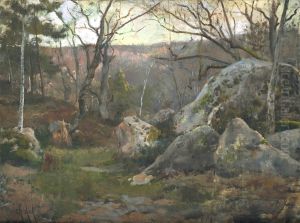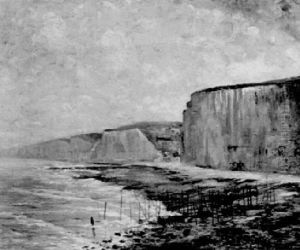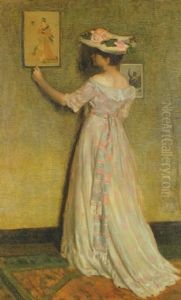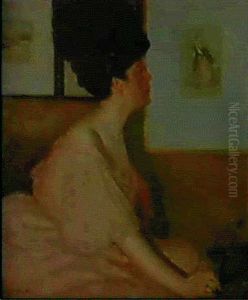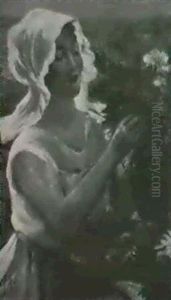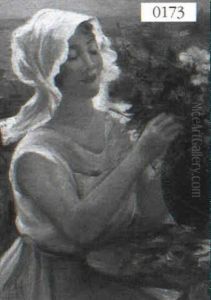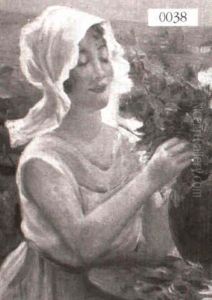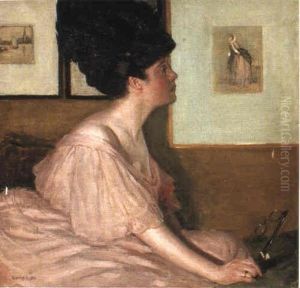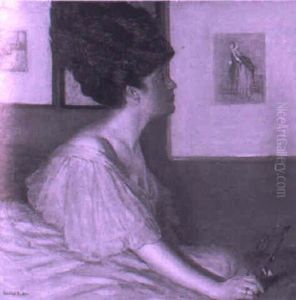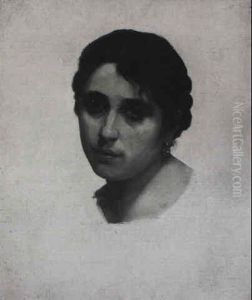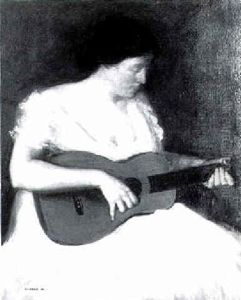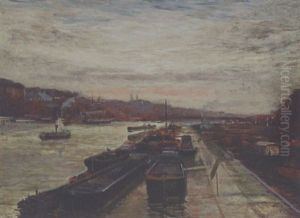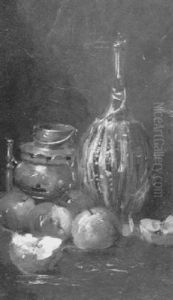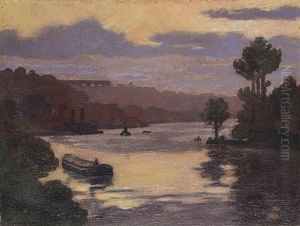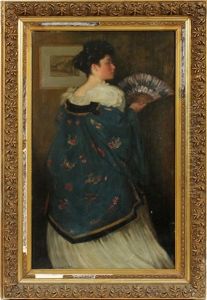George Charles Aid Paintings
George Charles Aid was an American artist known primarily for his etching and painting. Born on December 26, 1872, in Quincy, Illinois, Aid developed an interest in art at an early age. He pursued his passion for art through education, initially at the St. Louis School of Fine Arts and later at the Academie Julian in Paris, where he studied under Jean-Paul Laurens and Benjamin Constant. Aid's education in Paris was pivotal, as it exposed him to the European tradition of etching, which would become a significant aspect of his artistic practice.
During his time in Europe, Aid was influenced by the Old Masters and by the techniques of contemporary European etchers. He became proficient in the art of etching, a printmaking technique that involves using acid to cut into the unprotected parts of a metal surface to create a design in intaglio (incised) in the metal. After his studies, Aid returned to the United States and settled in New York City, where he became part of the vibrant art scene and started producing his own work.
George Charles Aid's body of work largely reflects his skill as an etcher and his keen eye for detail. He depicted a variety of subjects, including landscapes, cityscapes, and rural scenes. His art was appreciated for its precision and its ability to capture the essence of the environment he portrayed. Aid's etchings earned him recognition and awards, and he was active in the art community, participating in various exhibitions and becoming a member of the Chicago Society of Etchers.
Beyond his etchings, Aid also worked in oils and watercolors, though these aspects of his oeuvre are less well-known. He taught at the National Academy of Design in New York for a period, sharing his knowledge and skills with a younger generation of artists.
George Charles Aid passed away on November 15, 1938, in New York City. Although he might not be as widely recognized as some of his contemporaries, his work has been preserved and can be found in the collections of several museums and institutions, attesting to his contribution to the American etching movement and the field of fine arts.
